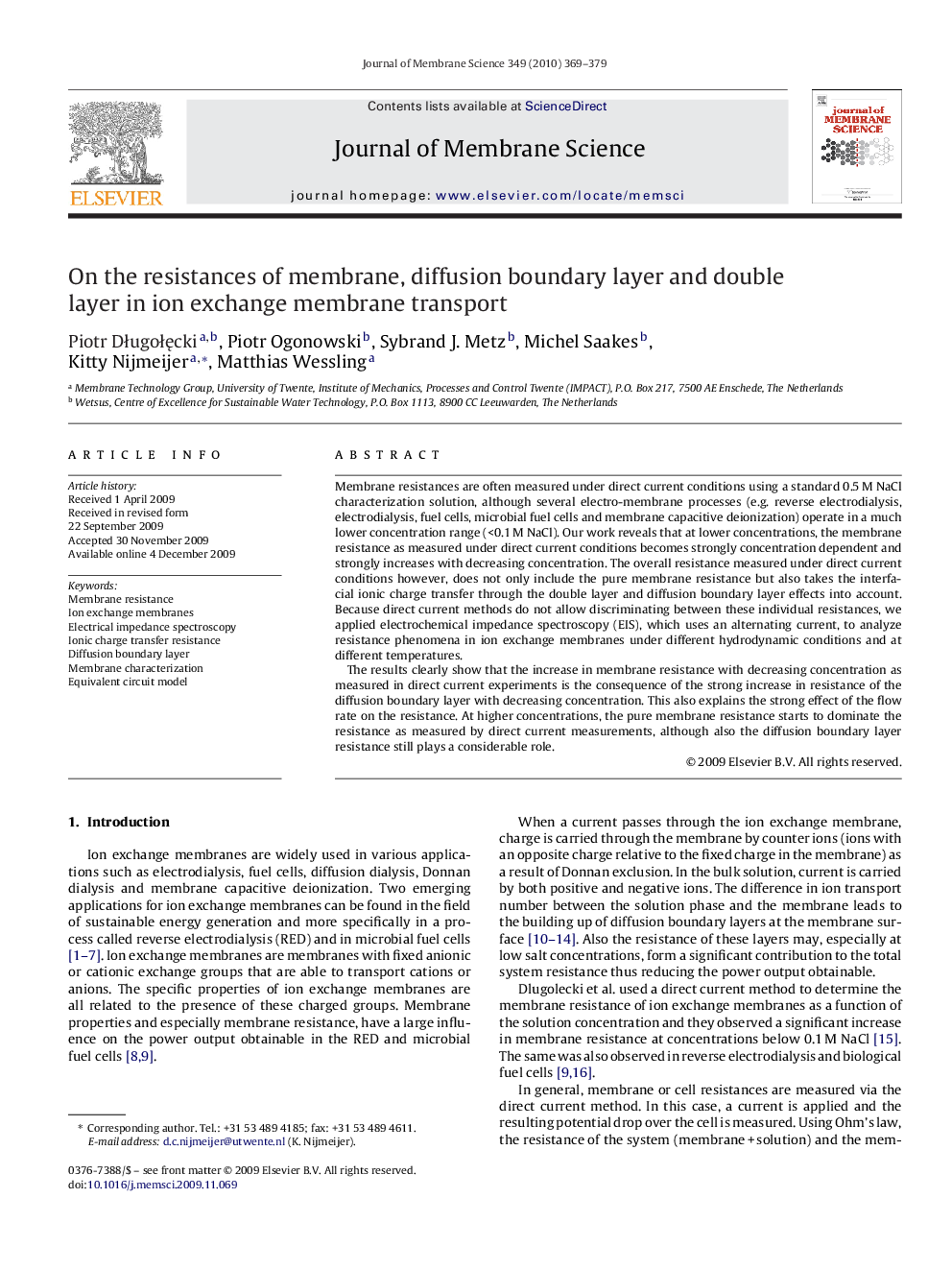| Article ID | Journal | Published Year | Pages | File Type |
|---|---|---|---|---|
| 636616 | Journal of Membrane Science | 2010 | 11 Pages |
Membrane resistances are often measured under direct current conditions using a standard 0.5 M NaCl characterization solution, although several electro-membrane processes (e.g. reverse electrodialysis, electrodialysis, fuel cells, microbial fuel cells and membrane capacitive deionization) operate in a much lower concentration range (<0.1 M NaCl). Our work reveals that at lower concentrations, the membrane resistance as measured under direct current conditions becomes strongly concentration dependent and strongly increases with decreasing concentration. The overall resistance measured under direct current conditions however, does not only include the pure membrane resistance but also takes the interfacial ionic charge transfer through the double layer and diffusion boundary layer effects into account. Because direct current methods do not allow discriminating between these individual resistances, we applied electrochemical impedance spectroscopy (EIS), which uses an alternating current, to analyze resistance phenomena in ion exchange membranes under different hydrodynamic conditions and at different temperatures.The results clearly show that the increase in membrane resistance with decreasing concentration as measured in direct current experiments is the consequence of the strong increase in resistance of the diffusion boundary layer with decreasing concentration. This also explains the strong effect of the flow rate on the resistance. At higher concentrations, the pure membrane resistance starts to dominate the resistance as measured by direct current measurements, although also the diffusion boundary layer resistance still plays a considerable role.
